We believe everyone should be able to make financial decisions with confidence. And while our site doesn’t feature every company or financial product available on the market, we’re proud that the guidance we offer, the information we provide and the tools we create are objective, independent, straightforward — and free.
So how do we make money? Our partners compensate us. This may influence which products we review and write about (and where those products appear on the site), but it in no way affects our recommendations or advice, which are grounded in thousands of hours of research. Our partners cannot pay us to guarantee favorable reviews of their products or services. Here is a list of our partners.
You can pay from $50 to over $1,000 for a single new tire, depending on type and quality.
By
Whitney Vandiver
Whitney Vandiver
Writer | Car ownership, car maintenance
Whitney Vandiver writes for NerdWallet about ways car owners can save money on ownership and maintenance. She previously wrote in the oil and gas industry, where she was published in national journals and international magazines. Whitney became a writer out of enjoyment and finds stories that highlight or help the LGBTQ+ community the most rewarding to craft. When she's not writing, she enjoys reading and walking with her Irish wolfhound. She is based in Houston.
Learn More
Edited by Julie Myhre-Nunes
Julie Myhre-Nunes
Assistant Assigning Editor | Auto loans, consumer credit
Julie Myhre-Nunes is an assistant assigning editor at NerdWallet. She has been working in the personal finance space for more than 10 years. Before joining NerdWallet, Julie oversaw editorial teams at NextAdvisor, Red Ventures and Quote.com. Her personal finance insight has been featured on Forbes, The Boston Globe and CNBC throughout the years.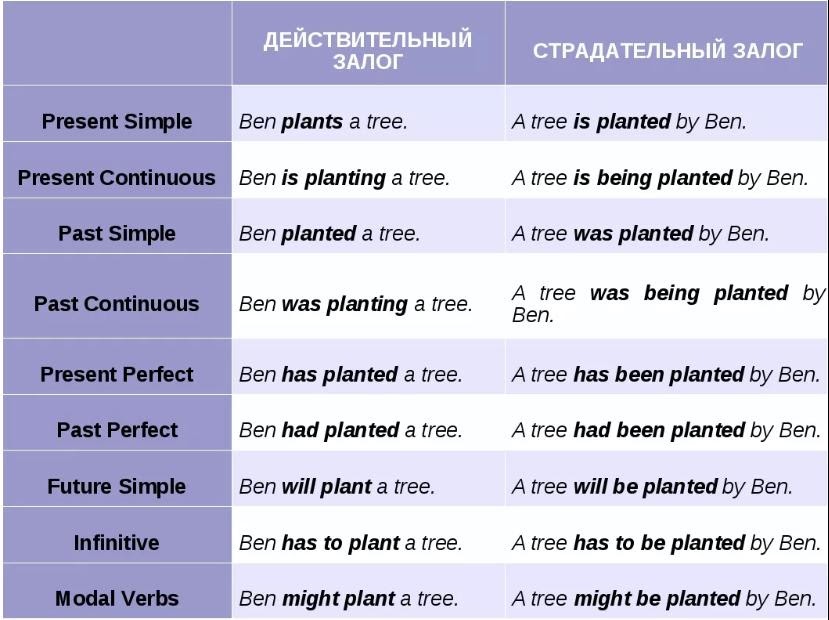 Julie’s writing has been published by USA Today, Business Insider and Wired Insights, among others. Email: <a href="mailto:[email protected]">[email protected]</a>.
Julie’s writing has been published by USA Today, Business Insider and Wired Insights, among others. Email: <a href="mailto:[email protected]">[email protected]</a>.
Many or all of the products featured here are from our partners who compensate us. This may influence which products we write about and where and how the product appears on a page. However, this does not influence our evaluations. Our opinions are our own. Here is a list of our partners and here's how we make money.
Tires are a big part of the cost of owning a car, and the range of tire prices doesn’t make it easier to budget for them.
The price of tires depends on several factors, including how they perform in certain weather conditions, how well they handle, and what type of terrain they can manage.
Each type of tire comes with its own price range. And while some tires might induce sticker shock, plenty of affordable options are on the market.
Tires are made of varying compounds and have different treadwear ratings. These ratings tell you how long the tires will likely last. Tires are usually categorized according to the conditions in which they work best. Here are some of the common types of tires, and the factors that may affect their cost.
These ratings tell you how long the tires will likely last. Tires are usually categorized according to the conditions in which they work best. Here are some of the common types of tires, and the factors that may affect their cost.
Weather performance. Tires are categorized as summer, winter or all-season. Summer and winter tires are designed to perform in certain types of weather, and all-season tires find a balance between summer and winter. All-season tires tend to be the cheapest option, and summer tires tend to be the most expensive. Winter tires fall somewhere in the middle.
🤓Nerdy Tip
If you live somewhere that drops below 40 degrees for only a few weeks a year, it’ll be cheaper to buy all-season tires for year-round driving than to go with winter tires that you swap out seasonally.
Comfort. Some types of tires, such as touring tires, are designed to give you a smoother ride. Comfort tires may have the same performance potential as other tires — for example, they may have the same wet and dry braking capabilities as all-season tires — but they tend to cost more because they offer a more comfortable ride.
Terrain. All-terrain tires are generally more expensive than standard highway tires because they have tread designed to let you go off-road. While you can get about 40,000 miles out of an all-terrain tire, it’s likely to wear down more quickly and need replacing sooner than a highway tire.
Performance. Designed for sports cars, performance tires let you take corners tightly and stop on a dime. They’ll give you that fast-driving experience, but you’ll pay more for performance tires.
The cost of tires can vary widely by type. Discount Tire, a national tire retailer, breaks down the average cost of tires by type and wheel size. Here is the range of prices and median cost per tire for each wheel size:
12-inch to 15-inch wheels. Tires often run $80 to $150, with a median price of $115. These tires are common for compact cars.
16-inch to 20-inch wheels. Tires of this size generally cost $100 to $400, with a median price of $250.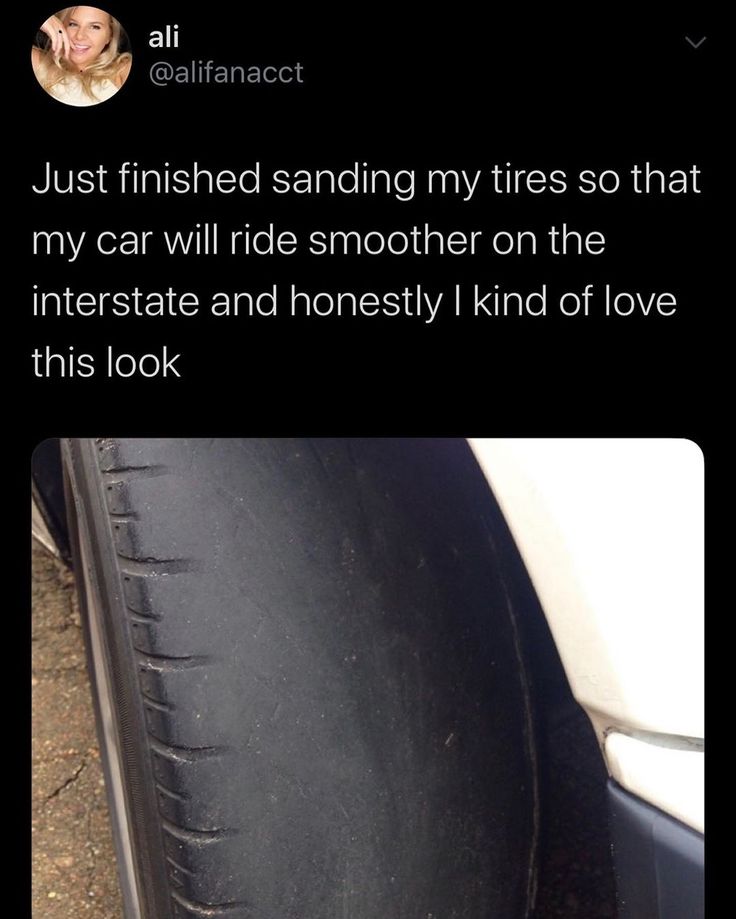 These tires are common for SUVs, crossovers, vans and trucks.
These tires are common for SUVs, crossovers, vans and trucks.
18-inch to 26-inch wheels. Tires often cost $140 to $500, with a median price of $320. These tires are common for larger trucks and utility vehicles.
The cheaper the tire within a certain group, the less likely it is to perform as well or last as long. Economical options are available, but research the quality of any tire you’re considering before buying it.
The table below shows the range of prices for different types of tires. These prices are not specific to a certain vehicle or tire size. They were gathered from Discount Tire's online inventory in October 2022.
Type of tire | Low price per tire | High price per tire |
|---|---|---|
All-season | ||
Summer | $1,486. | |
Winter | $1,311. | |
Touring | ||
Terrain | $1,447. | |
Performance | $1,486. |
When having new tires installed, the total average cost for labor is $50 to $300, according to CarRoar.com. The labor cost can vary by vehicle and tire size: The bigger the tires or more complicated the install, the higher the labor charge. For example, many shops charge more to mount low-profile tires.
Having new tires installed includes several steps. Your total labor cost is likely to include the time to perform the labor, mounting and balancing of the new tires, and disposal fees to get rid of your old tires.
🤓Nerdy Tip
You are likely to get a discount on the labor for having new tires installed if you have the work done at the shop where you purchase the tires.
Frequently asked questions
How much does a set of four tires cost?
The price of a set of four tires will depend on the size and type of tire, but the median price for four tires is between $460 and $1,280. If you have smaller tires and decide to go with a cheaper option, you could pay below that range. However, if you have larger wheels and want performance or touring tires, you’re likely to pay close to $1,000 or more. Keep in mind these prices do not include labor fees to have the tires installed.
If you have smaller tires and decide to go with a cheaper option, you could pay below that range. However, if you have larger wheels and want performance or touring tires, you’re likely to pay close to $1,000 or more. Keep in mind these prices do not include labor fees to have the tires installed.
What is a good price to pay for tires?
The price of a tire depends on several factors, but you can use the average median price based on size to judge if you’re getting a good deal. A median price for a tire for a 12-inch to 15-inch wheel will run about $115. That jumps to a median price of $250 for 16-inch to 20-inch wheels, and a tire for a larger 18-inch to 26-inch wheel is likely to have a median price of $320.
Should I replace all four tires at once?
You’ll probably need to replace all four tires at once if you drive an all-wheel drive vehicle. Otherwise, you could damage the vehicle’s drivetrain. But other types of vehicles give you more options. You can probably replace a single tire if it’s damaged and the other tires still have substantial tread remaining. Chat with a tire specialist if you’re unsure about your options.
Chat with a tire specialist if you’re unsure about your options.
How long should four tires last?
If you replaced all four tires at the same time or are on a vehicle’s first set of tires, on average the tires should last about six years and get between 36,000-75,000 miles in their lifespan. But tire life can vary with factors like driving habits, maintenance and climate. Regardless of their condition, no tires should be used longer than 10 years.
About the author: Whitney Vandiver is a writer at NerdWallet currently focusing on car ownership and maintenance. She's previously written about small business and payments. Read more
On a similar note...
Get more smart money moves – straight to your inbox
Sign up and we’ll send you Nerdy articles about the money topics that matter most to you along with other ways to help you get more from your money.
At some point, every car requires new tires. Since you want to budget accordingly, it’s important to know how much does it cost to replace your tires.
Since you want to budget accordingly, it’s important to know how much does it cost to replace your tires.
In this guide, we cover the varying factors that influence the new tire price. We also give you a few tips that may help you save some money.
How Much Do New Tires Cost?A new set of four tires will usually cost you between $400 and $1500, depending on the type of tire, vehicle, quality and where you get them installed. If you choose cheap tires, you may be able to spend $50 each, but on some vehicle types, you can easily spend $1500 or more on a new set of tires.
Now that we have the quick answer to the general cost of new tires, let’s take a closer look at the factors that affect the cost.
Factors Affecting Cost to Replace Your Tires1. Tire SizeThe biggest factor affecting your expense will be the size of the tire you need. You can find tires in all sizes, meant for a multitude of purposes.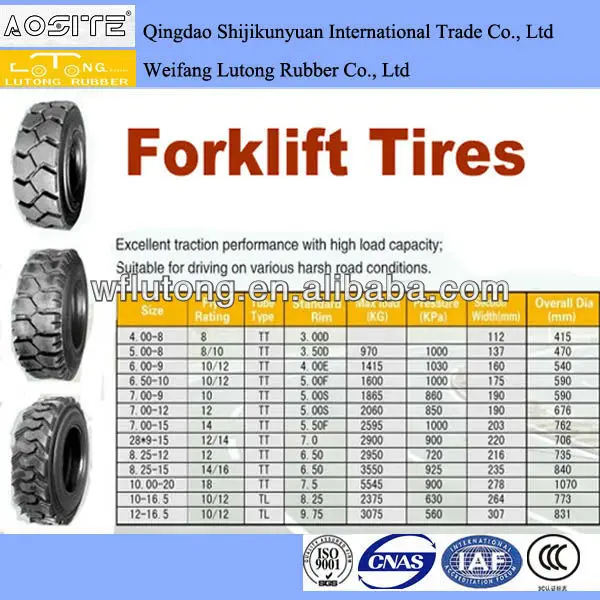 If you have a compact car, you will have the cheapest tires available, maybe even $50 each.
If you have a compact car, you will have the cheapest tires available, maybe even $50 each.
Of course, high-performance cars, large pickup trucks, specialty off-road vehicles, and SUVs will naturally cost more. A good rule of thumb is that the larger the tire is, the more you can expect to pay for it.
2. BrandThere are just as many tire brands as there are sizes. Many tire shops specialize in one budget brand and carry a multitude of name brands.
You will spend far less to go with the no-name brand, but you need to think about the quality. After all, if you save money today by choosing this brand, does it really pay off if you have to replace the tires again prematurely? You may also get a much longer mileage warranty with quality tires, than with inexpensive tires.
If you choose a premium tire brand such as Michelin, Continental, Goodyear, Bridgestone, you will of course pay much more, but you know that you will get quality tires that last a long time and keep your vehicle on the road.
RELATED: 6 Worst Tire Brands to Avoid Buying
3. Installation CostMost tire shops do not make a lot of money on the tire installation. The job itself doesn’t take long and the price can often be included with the cost of the tires.
On average, you can expect most shops to tack on about $20-$40 per tire for the installation. However, if you visit a warehouse club, that expense could be even less.
4. Tire DisposalYou don’t get to leave your old tires with the shop without paying a price. These shops must pay to have them recycled, so that cost gets passed down to you.
On average, the tire disposal fees will be between $2 and $10 per tire to dispose of them. If you would rather save this money, you can get rid of them yourself.
5. Road Hazard/Warranty ProtectionOn top of the regular price paid for your tires, you may choose to add some extra warranty protection. With road hazard protection, you are covered if your tires get a hole or blow out.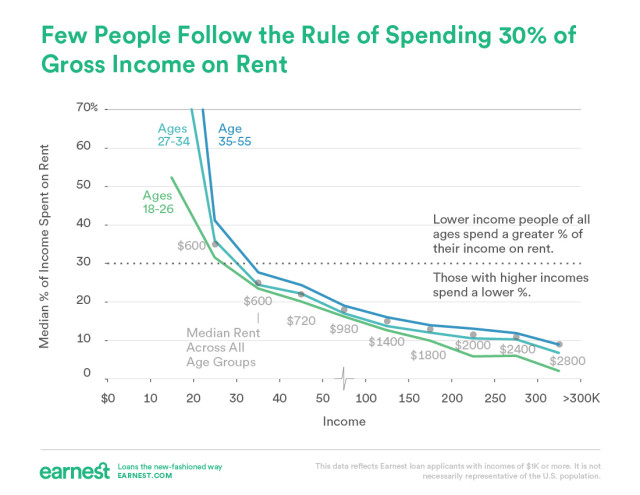
However, you must be careful who you choose to get road hazard through. Not all companies are going to follow through on the agreement, leaving you paying for protection that doesn’t matter when something actually goes wrong.
6. Wheel AlignmentWhen your new tires are installed, you will need to get a wheel alignment. Having properly aligned tires ensures that they last as long as possible.
You might pay between $75 and $200 to have the wheels aligned, depending on how many need to be done. However, this money can be seen as an investment, ensuring that your tires continue to provide reliable transportation.
How to Save Money on Tires1. Shop AroundThe most important factor is shopping around. You can call one location and get a price on a particular set of tires and the cost is completely different somewhere else, even though they are the same tires.
When you are shopping around, keep a couple of costs in mind.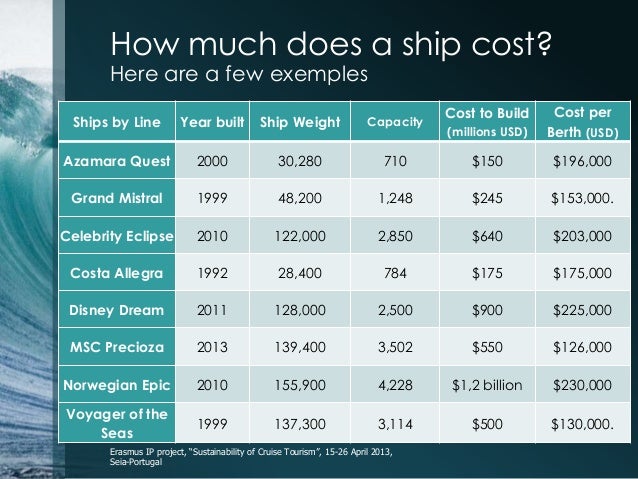 You will have the cost of the tires, the cost of installation and any fees that the company charges. Ask for the “out the door” price, so you can compare it apples-to-apples.
You will have the cost of the tires, the cost of installation and any fees that the company charges. Ask for the “out the door” price, so you can compare it apples-to-apples.
RELATED: How Much Do Rims Cost?
2. Watch for SalesYou can get a great deal if you shop during a sale. Of course, it’s not always convenient to wait for the next sale, but if you have some time before the tires need to be changed, this is a great way to save.
Throughout the year, tire shops will offer various sales. You can take advantage of a Buy 3, Get 1 Free deal or enjoy a certain percentage off. Most tire sales correspond with holidays, so you can tell when one might be around the corner.
3. Take Advantage of RebatesTire shops don’t often make a whole lot on the tire, so discounts can be limited. However, the manufacturers are happy to offer rebates throughout the year.
Most of the rebates are through the mail but can be found online. Additionally, the tire shops have the inside scoop on what’s available, so be sure to ask.
Additionally, the tire shops have the inside scoop on what’s available, so be sure to ask.
It’s not always wise to purchase used tires, but the takeoff is something entirely different. These tires were installed brand-new and only used for a couple of days before the customer decided they didn’t want them.
It could be that the client didn’t appreciate the ride or simply decided they wanted something better. Either way, the tire shop will offer the replacement tires at a discounted price, so be sure to ask what’s available, especially if you use a popular tire size.
5. Use All-Season TiresIf you live in a cold climate where a lot of snow falls, you might have two sets of tires. Most people in these regions use summer and winter tires. With two sets of tires, you have a lot more money out, especially every time you need to have them switched.
If you aren’t actually driving in the snow, it might be better to use all-season tires throughout the year. While these aren’t going to get you through deep snow, there’s no sense spending more for something you don’t need. Evaluate your options and see if you can stick to using one set all year long.
While these aren’t going to get you through deep snow, there’s no sense spending more for something you don’t need. Evaluate your options and see if you can stick to using one set all year long.
RELATED: 10 Best All-Season Tires – Review & Buyer’s Guide
The lifespan of a tire will depend on the type of tire, the type of driving you do, and the climate. Generally, tires last between 50,000 and 80,000 miles and 6 years. If you drive a lot in city traffic and brake a lot or live in a hot climate, your tires may wear out sooner. If you often drive around with low tire pressure or a bad wheel alignment, they may also wear down sooner.
If your tire tread depth is close to 2/32” or under, it’s definitely time to replace them. Most tire manufacturers recommend replacing tires every 6 years, regardless of the number of miles driven. This is because tire rubber degrades over time, even if the tires are not used. Tires that are more than 6 years old should be inspected by a professional to determine if they are safe to use.
Most tire manufacturers recommend replacing tires every 6 years, regardless of the number of miles driven. This is because tire rubber degrades over time, even if the tires are not used. Tires that are more than 6 years old should be inspected by a professional to determine if they are safe to use.
If your car is two-wheel-drive, it’s fine to replace two tires on the same axle instead of four, although you need to consider that your car will handle differently with two new tires than with four. If you are replacing two tires, it is best to put the new or best tires on the rear axle, as this will improve traction and stability.
On many 4WD and AWD cars, however, the diameter of the tires must match, otherwise, you can damage the transmission or the differential. Therefore, it is recommended to replace all four tires on 4WD cars, and it’s a requirement for many car brands like BMW and Audi.
You need to read the tire dimensions on your old tires and take them to the tire shop.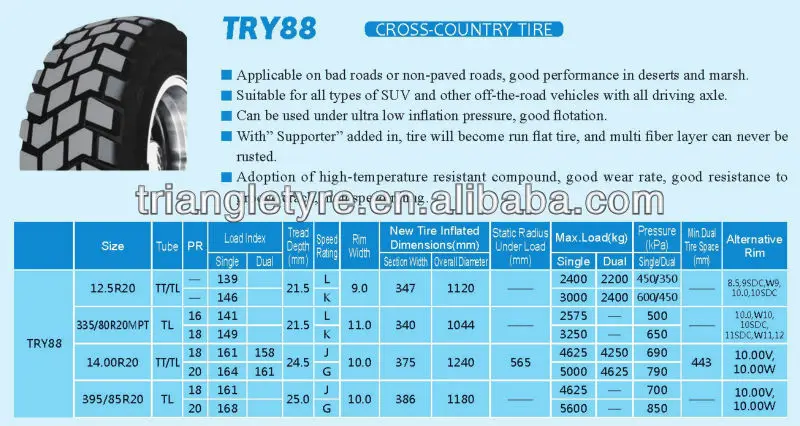 You can also call your authorized dealer or check your owner’s manual if the wheels are stock.
You can also call your authorized dealer or check your owner’s manual if the wheels are stock.
Categories: Tires, Estimator
How to break in studded tires correctly so that you don't feel a loss of efficiency in winter.
Winter came - change your shoes and go. This rule is familiar to all drivers. However, with the advent of studded car tires, it had to be replaced with a new version: “Change your shoes, break in the tires and go wherever you want.” After all, even very expensive tires will let you down without running in - no manufacturer can guarantee uniform immersion of the studs into the tread. Therefore, every driver must learn the rules for changing seasonal tires and the subsequent running in of a winter or summer model. nine0003
As a general rule, summer tires are replaced with winter car shoes with the first cold snap, when the temperature drops below +7 °C. This recommendation is followed by both Europeans and Americans. After all, the summer tread loses elasticity even before the onset of serious frosts. Therefore, in place of hard tires for the warm season, soft models for winter are put on car rims.
This recommendation is followed by both Europeans and Americans. After all, the summer tread loses elasticity even before the onset of serious frosts. Therefore, in place of hard tires for the warm season, soft models for winter are put on car rims.
Winter tire can be studded and smooth. According to the tread pattern, models for winter are divided into European (with a V-shaped notch) and Scandinavian (with diamonds and squares) options. nine0003
Smooth European-style Velcro is chosen by residents of the southern regions or city dwellers living in the neighborhood with a well-established public service. They are designed for clean asphalt. The studded version is needed for driving on packed snow and icy roads. On such a track, a studded tire reduces braking distances by 25-30% and improves handling during difficult maneuvers, sharp turns or fast lane changes.
Running in studded tires is a mandatory procedure recommended by all winter tire manufacturers.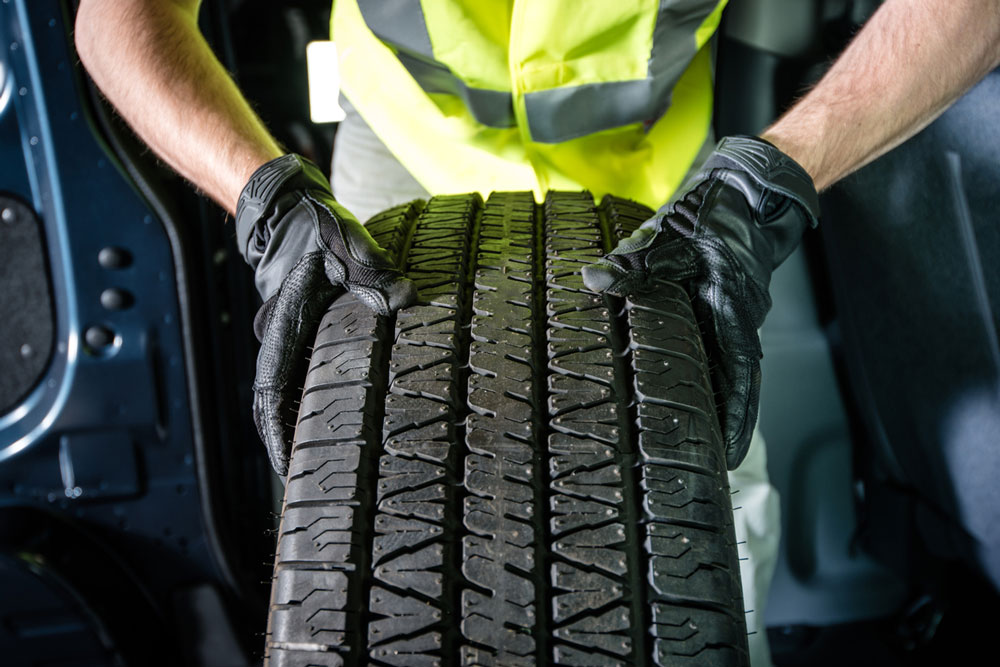 The reason for this recommendation is hidden in the technological miscalculation - no manufacturer can insert studs into the tread, maintaining the same depth of immersion. And although the spread in the height of the stud above the tread level does not exceed hundredths of a millimeter, this defect is enough to reduce the driving characteristics and controllability of the car.
The reason for this recommendation is hidden in the technological miscalculation - no manufacturer can insert studs into the tread, maintaining the same depth of immersion. And although the spread in the height of the stud above the tread level does not exceed hundredths of a millimeter, this defect is enough to reduce the driving characteristics and controllability of the car.
To avoid trouble on the road, the driver will have to run in a studded tire, driving on a winter road at low speed and without sudden maneuvers. Under the weight of the car and passengers, the spikes will fall into place, after which the driver can forget about all the restrictions and return to his usual driving style. nine0003
If you haven't experienced studded driving, running in will help you get used to the new acceleration and braking dynamics.
 The correct weather for running in: light frost in the morning and evening, with positive temperatures during the day.
The correct weather for running in: light frost in the morning and evening, with positive temperatures during the day. If you forgot to record the odometer reading - don't worry, you can track the duration of adaptation, focusing on the running indicator. On any new studded tire, you can see the indicator notch that surrounds the metal insert. When the indicator wears off on the asphalt, studded tires are considered ready for long trips. nine0003
The process of monitoring the indicator involves a thorough inspection of the tread. You can get additional benefit from this action by cleaning the tread with new spikes from pebbles and other foreign objects stuck in the cut. In addition, another control operation can be timed to the inspection of the indicator - checking the tire pressure.
If you put your car in a studded model, the tire pressure must correspond to the norm prescribed by the manufacturer. Too much or too little pressure causes the studs to fall out at the center or edges of the tread. Such a wheel is erased to the "bald head" during one winter season. A properly inflated tire will last 3-4 winters. nine0003
The correct pressure is determined by the vehicle manufacturer. Controllability, cross-country ability and even fuel consumption depend on this indicator. Therefore, the correct pressure depends on the weight of the machine, the permissible speed and even the time of year.
The correct tire pressure can be found in the manufacturer's manual or on a decal affixed under the gas cap or on the driver's door pillar. Moreover, this indicator is tied to the dimensions of the tire (diameter and width), the expected load and whether the wheel belongs to the front or rear axle. nine0003
Therefore, several values \u200b\u200bare indicated in the table (in bar or kgf / cm2) and if you are going to break in tires in the winter, you will not only have to pump up the tire to the correct pressure, but check this indicator at least once a week using a pressure gauge. Otherwise, the studded tread will lose most of the metal elements and will not be able to keep the car on ice.
Too much or too little pressure causes the tread indicators to wear unevenly.
Winter Drive protection
Tires Goodyear UltraGrip Arctic 2 SUV
Winter Drive protection
Rating:
4.5
Tires Goodyear UltraGrip 600
Winter Drive Protection Sound Comfort
Rating:
4.5
Tires Goodyear UltraGrip Ice Arctic
Winter Drive protection
Tires Goodyear UltraGrip Arctic 2
Winter Drive Protection Sound Comfort
Rating:
4.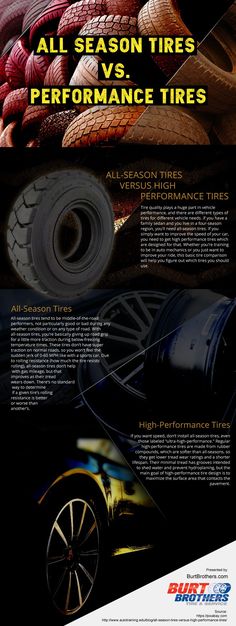 5
5
Tires Goodyear UltraGrip Ice Arctic SUV
Winter
Rating:
4
Tires Goodyear Cargo UltraGrip 2
Even if you can boast of the right driving style, without skidding, slipping and other extreme sports, when choosing a route for running in a studded tread, you will have to follow these recommendations:
Of course, such ideal road conditions are found only in large cities, but a good road can also be found in the regions. Therefore, try to erase the indicator on such a coating. In this case, the studded tread will last you twice as long as the rubber run in potholes and pits. nine0003
The use of new rubber compounds in tires reduces the period of adaptation of tires to the road, but neither winter nor summer tires can do without a break-in. True, for summer wheels, the adaptation period is 2-5 times shorter than for the winter version.
If you want to break in a new tire in winter, according to the rules, you will have to drive at least 500 kilometers at a speed of up to 60 km / h, spending 8-9hours. Summer rules are not as strict as winter recommendations: the speed limit is increased to 80-100 km/h, and the recommended distance is reduced to 100-200 kilometers. As a result, winter rules suggest erasing the indicator in 8-9 hours, and summer recommendations - in 1-3 hours.
Regarding the requirements for driving style, the rules are unanimous - during the break-in of new tires, the driver must maintain a calm driving style.
To sum up all the break-in rules, the final recommendations can be reduced to three pieces of advice:
If you don't know where the wear indicator is located, ask your auto parts and accessories store manager. If you are afraid to make a mistake when checking the pressure - do not trust your pressure gauge, contact any car service. Some of the recommendations may seem like overkill to you, but the loss of time and money will be justified by twice the life of your winter tires. Just do not try to drive the entire 1000 kilometers at once - this distance must be divided into 4-5 stages, allocating 3 hours for each. nine0003
Some of the recommendations may seem like overkill to you, but the loss of time and money will be justified by twice the life of your winter tires. Just do not try to drive the entire 1000 kilometers at once - this distance must be divided into 4-5 stages, allocating 3 hours for each. nine0003
Related materials
7 rubber signals: what the tire says about car problems
How do you know when tires are completely worn out and it's time to change them? Everything is simple. For summer tires, the limit is 1.6 mm of residual tread depth, and for winter (or all-season tires used in winter) - 4 mm. Modern summer tires can travel from 40,000 to 70,000 km, depending on driving style and vehicle characteristics. An average motorist rolls such a mileage on summer tires in 2-3 seasons. Moreover, wear implies not only a decrease in tread depth. For millions of cycles of deformation, the strength of the carcass and its adhesion to the layers of the rubber compound are violated. In short, every 2-3 years you should buy a new set of tires. nine0003
In short, every 2-3 years you should buy a new set of tires. nine0003
In case of irreparable damage to one of the tires and a relatively high total mileage of the kit, it is also worth considering replacing it. Well, or about buying at least a pair of new tires, which, for any type of drive, should be installed on the front axle. We put two tires back - the most decent of the remaining ones.
Many motorists drive only a few thousand kilometers a year. This does not mean that the tires will serve you for several decades. According to Russian requirements (GOST 4754-97), the service life of passenger car tires is 5 years from the date of manufacture. And for example, Continental recommends that all car tires (including the spare tire) older than 10 years old should be replaced with new ones. Therefore, with small runs, you can navigate for ten years. The date of manufacture of the tire is indicated on the sidewall. Usually it is an oval with four numbers. The first two are the ordinal number of the week in the year, the last two indicate the year.
The first two are the ordinal number of the week in the year, the last two indicate the year.
Related materials
How to change the car yourself - detailed instructions
Tires should be rotated periodically in accordance with the vehicle manufacturer's recommendations - information on this can be found in the owner's manual.
We can advise you to carefully use the tires and, most importantly, to store them correctly in the off-season. First of all, during storage, it is important to exclude direct sunlight from hitting the tires, which greatly age the rubber. Tires without rims should be placed vertically, and stacked on rims. nine0003
And before installing tires on a car at the beginning of the season, evaluate their condition. There should be no cracks in the tread and sidewalls. The tire should not be dry, it should remain rubbery and not look like baked plastic.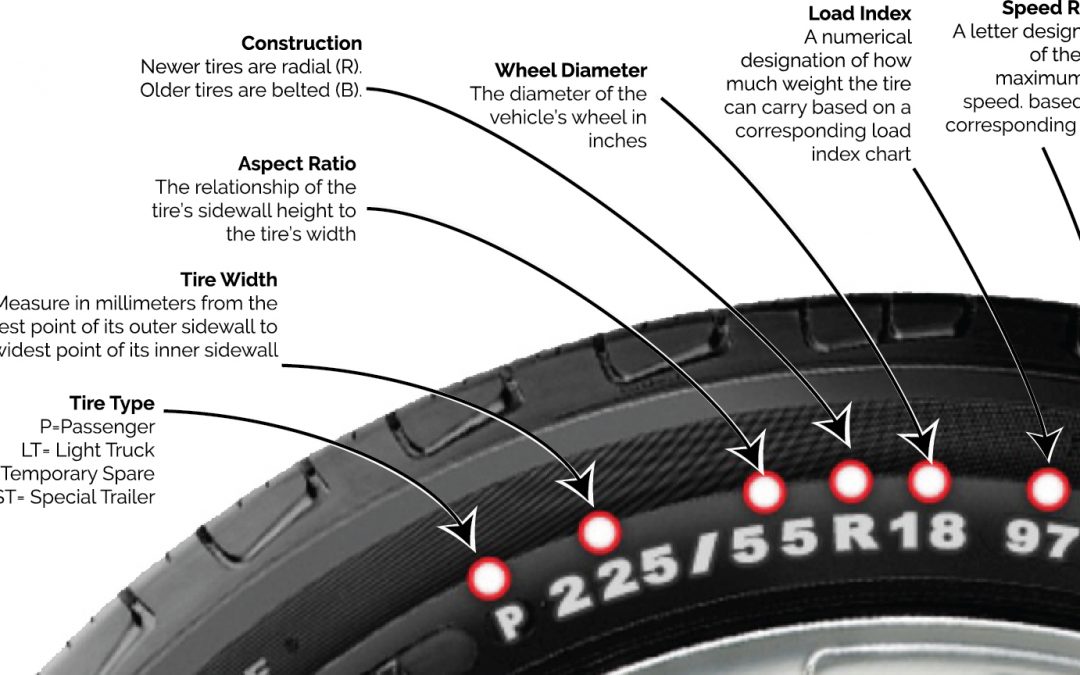
Related materials
Driving on badly worn tires - will I be fined or not?
Winter tires have a much shorter life span. They almost always fail due to the wear of the treadmill, because the tread of a new tire is 7–8 mm, and only 3–4 mm remain working height. If the tires are studded, then with such wear there are very few metal elements left, and the tire will not provide adequate safety when driving on a winter road. However, not only spikes, but also Velcro, with such a degree of wear, also lose most of their capabilities. nine0003
The real life of winter tires rarely exceeds 30,000 km. "Bald" winter tires without studs can be re-rolled in summer, but their grip on hot road surfaces will be very poor. This must be taken into account, especially when braking.
***
So: tires that have not yet worn out along the tread (that is, up to 1.